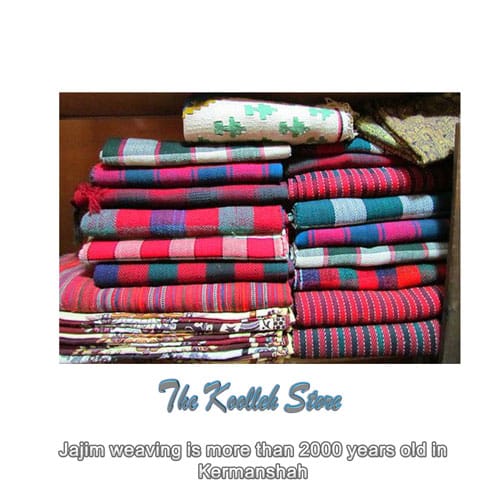Jajim weaving is more than 2000 years old in Kermanshah

Jajim weaving is another handicraft in Kermanshah that has long been popular among rural and nomadic families. Jajim is used as a warm cover. Even among some families, the village of Jajim is given as a bright eye and a dowry for young people, and it remains a valuable memory for many years in families. The raw materials of Jajim are wool, and its texture is similar to that of kilim, with the difference that Jajim is woven in four boards and connected and sewn together after weaving. In the Oraman and Thalas regions, women weave jajims with various patterns and high quality materials, which is unique in its kind.
Kermanshah’s deputy for handicrafts said: “Jajim weaving has become obsolete and in fact no exact history is available.”
Nusratullah Sepehr stated that the reason was this: because wool and woolen textiles would eventually be destroyed over time due to heat and heat or contact with the soil, it was not possible to say when the exact date was related.
He said: “According to the ancient patterns woven on Jajim and its weaving machines, it can be said that it is at least 2 to 3 thousand years old.”
He stated: “In order for this art not to decline, we have tried to teach it to those who are interested and update this art.”
He said: “The change in the use of these products is that now we use the package as a bag, a mobile phone case, a rumble, and a bed and screw bed.
Sepehr stated: In the past, Jajim was used in various ways, including in cold regions such as Sanghar as quilt, and in Lak and Kalhor areas as used, but in Kermanshah itself, it was used as a mat (like carpet) and saddle on horseback.
He said: “Currently, the number of skilled artists working in this city is 1,000, and the threat of 100 artists is active full time.
In the end, the deputy director of handicrafts said that this type of handicraft was nationally registered in 2011 and received a UNESCO award for the quality of the goods.






